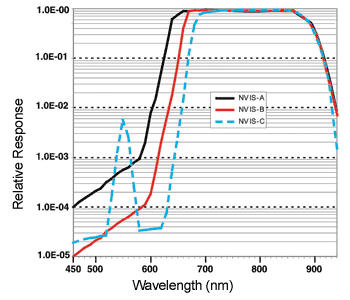LAMPSguy
Well Known Member
One important topic of discussion today...the change from incandescent to LED.
Red lights are BRIGHT on NVG's, but as towers (scary) and airplanes change over to LED's we have found that they throw off so very LITTLE NVG compatible light as to be nearly invisible until very close. One example, think of those bright blue taxi lights...look at them the next time you fly on a DARK night. I can't see those until I am hovering above them at around 150 AGL!
Red lights on towers...they become invisible (or nearly so) until a FEW HUNDRED feet away in some cases! Even scarier, the tower people do NOT need to inform the FAA (as far as we can tell) since it still complies with the lighting standards!
Why do I bring this up? If you fly at night in an area with military aircraft and have LED NAV light, just think about this...you don't have UHF (we use it almost exclusively), we DO have NVGs and we DO see and avoid, but remember we can get task saturated too. I just want everybody to be safe. DO a chart study and look for MTR's in your area (look it up if you can't remember what it is).
Also, any LED manufacturers out there...simple, add ONE IR LED to each side, now we will see you!
this is not meant to be a "MIL v GA" argument, I just want to make sure everyone is aware of this as we though it important enough to bring up at work today!
Red lights are BRIGHT on NVG's, but as towers (scary) and airplanes change over to LED's we have found that they throw off so very LITTLE NVG compatible light as to be nearly invisible until very close. One example, think of those bright blue taxi lights...look at them the next time you fly on a DARK night. I can't see those until I am hovering above them at around 150 AGL!
Red lights on towers...they become invisible (or nearly so) until a FEW HUNDRED feet away in some cases! Even scarier, the tower people do NOT need to inform the FAA (as far as we can tell) since it still complies with the lighting standards!
Why do I bring this up? If you fly at night in an area with military aircraft and have LED NAV light, just think about this...you don't have UHF (we use it almost exclusively), we DO have NVGs and we DO see and avoid, but remember we can get task saturated too. I just want everybody to be safe. DO a chart study and look for MTR's in your area (look it up if you can't remember what it is).
Also, any LED manufacturers out there...simple, add ONE IR LED to each side, now we will see you!
this is not meant to be a "MIL v GA" argument, I just want to make sure everyone is aware of this as we though it important enough to bring up at work today!





